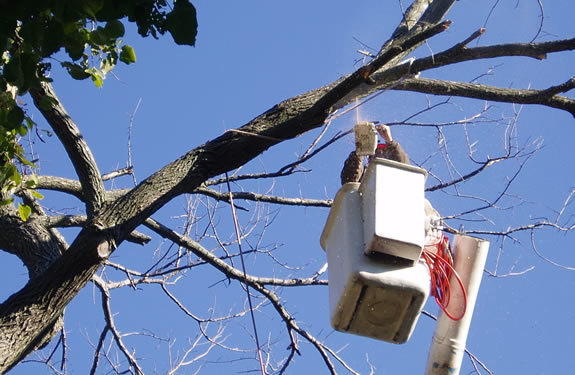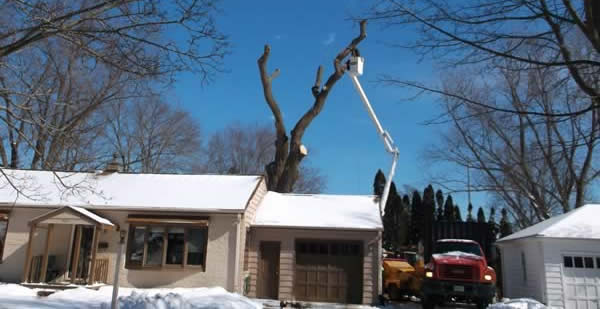Each season has its own set of important tasks to complete for proper tree maintenance, whether they are in your yard or on your commercial property. Without these tasks, you risk exposing your trees to damage caused by the environment or potentially devastating diseases.
Winter Tree Care Tasks
We have listed four of the most important winter tree care tasks below:

- Best Time to prune
- One of the most important winter tree care tasks is pruning. When trees become dormant is the ideal time to prune them. This is the best time for trimming as the sap has stopped moving and it gives the plant time to heal the wound before insects or animals can cause further damage or introduce disease.
- You want to remove any branches with damage or disease, especially branches that are dead or dying.
- Trimming is the time to select the central leader for the tree, as well as the lowest permanent branch based on the location and purpose of the tree.
- You should be careful to not trim too much back or remove too many branches, as this can have a detrimental effect on the health or look of the tree.
- Protect Your Young Or Vulnerable Trees From Freezing
- Make sure you are ready to provide protection for your most vulnerable trees when temperatures dip below 32-degrees.
- Young trees and tropical/subtropical trees can be damaged or killed in below or near-below freezing temperatures.
- You should cover these plants with burlap that extends to the ground to trap some warmth from the earth. You can use tarps or plastic sheeting, as well. Use stakes or a frame to minimize contact between the tree and the covering.
- Moisten the soil around the tree a few hours before sunset. Moist soil helps your tree in that it will absorb more solar radiation than dry soil, radiating that heat back into the air during the night.
- Potted trees and other potted plants should be brought into protected areas if possible.
- Mulch Your Trees
- Mulching is another important winter tree care task. It is essential to protect the root base and help with moisture retention.
- As with other tree maintenance, if not done properly you could do more harm than good.
- You should use wood chips, leaves, and other organic matter to create the mulch.
- Use a “doughnut” distribution around the tree, with the majority of the mulch peaked a few inches from the tree. This prevents an excess of moisture on the trunk that could cause damage or disease.
- Water When Rain or Snow is Scarce
- Trees still need water, even in the winter. Regular rainfall or a persistent snow-pack can provide a normal amount of water, but if the weather is dry during the winter months you should provide some additional water. This should be a regular part of your winter tree care routine.
- You should water young trees every week to two weeks with about 10-15 gallons of water. This is especially important for newly planted or young trees.
- Mature trees should only need to be watered once a month, or even every other month. To determine how much water to use measure the trunk and then multiply that measurement by 10 (e.g.- a 10″ diameter tree would need 100 gallons of water).
Need Help?
These winter tree care tasks are time-consuming and if not done properly could result in unintended damage. If you are not able to or do not feel comfortable performing these tasks on your trees, please call us for a consultation and free estimate. Our certified arborists are available to answer your questions and we offer a 24-hour emergency tree service.

